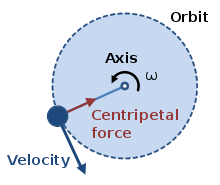You so badly want to say F=mv that when I told you it's wrong you threw out the baby with the bathwater.
I must admit thats pretty much it.
LOL
but now Im really convinced that you were right.
you must have a force that applies to a object to change a objects momentum.
F=ma can predict the force the mass applies to the pipe.
no it cant , because the mass has no force it can apply to the pipe.
f=ma means the mass must be accelerating.
the mass is not accelerating.
just beforce the mass strikes the turn it is not accelerating
therefore it cannot apply a force to the turn.
it only has momentum.
and momentum is not a force.
But you can't use F=ma unless you know what acceleration means. You don't, so that formula is useless to you.
from the looks of the above and the remainder of this post its you who doesnt fully understand acceleration.
Paul, you still think velocity is the same as speed.
Why?
dont you know that you can have an increase in velocity without having a change in direction?
when calculating angular acceleration you need to use the torque that is applied to push the object around in the circle.
to do that you must first find the torque.
t = r x f
t = torque
r = radius
f = force
DO YOU SEE VELOCITY IN THE ABOVE EQUATION?DO YOU SEE FORCE IN THE ABOVE EQUATION?notice the torque equation uses force , but theres no force applied to the mass that is pushing it around the in the circular path.
heres what I said.
and when they exited the turn their velocity would be higher than 40 m/s
they only have mass and velocity.
is 60 m/s
higher than 40 m/s?
Im sure your only picking more straws because I was explaining that the velocity of the mass would not increase.
and heres what Im going to make with all of them.

and that means that the velocity of the mass would not increase in the direction of its circular path.
and a velocity increase would be required for its angular acceleration to increase.
the torque equation is above.
angular acceleration = T/I
a = angular acceleration
T = torque
I = moment of Inertia
DO YOU SEE VELOCITY IN THE ABOVE EQUATION?DO YOU UNDERSTAND THAT A FORCE IS REQUIRED TO HAVE A TORQUE?DO YOU UNDERSTAND THAT A TORQUE IS REQUIRED TO HAVE ANGULAR ACCELERATION?there is no force being applied to the mass as it follows the circular path so there is no torque that you can use in the above equation.
in other words
its not being accelerated by a force in the direction of its circular path so it does not have angular acceleration , if you would notice I was talking about the angular acceleration of the mass which requires a increase in torque.
they only have momentum , there is no force that is causing them to accelerate through the turn so they dont have increasing angular acceleration so theres no force due to there mass x their acceleration that they can apply to the pipe.
there is no increase in torque so there cannot be a increase in angular acceleration.
Wait! Maybe there is hope! Here you show you understand that the object is accelerating through the turn. I don't know why you changed your mind in the last message. This acceleration is how you can find the force. Which I think you also calculated!
the mass that is passing through the turn is undergoing centripetal acceleration , this acceleration is toward the center of the turn , not away from the center of the turn.
kallog , a toward the center of the turn acceleration
does not mean that it is accelerating along the circular path.
angular acceleration = along the circular path
not towards the center of the circle.
it is accelerating towards the center of the circular path.
so I was right when I said that it has centripetal acceleration.
and I was right when I said that it has no angular acceleration.
it has angular velocity but its angular velocity is not increasing , its constant angular velocity is 40 m/s throughout the entire turn because we are using frictionless turns.
note: the only way that I can use the correct symbolism to prevent you from satisfying your straw picking habit would be to use 180 different angles in a 180 degree turn.
so I only used 40 m/s as the constant angular velocity through the turn.
I supposed I could have used the following
as the mass traverses the 180 degree turn from
40 m/s 0 degrees to 40 m/s 180 degrees
I was just thinking that you could follow that and I would not have write so much descriptive text to enable you to
understand.
heres a visual tool you can use to understand the concept of centripetal acceleration.
the blue dotted semi circle is the circular path that the mass follows , its not the direction of acceleration.
the direction of acceleration is the straight blue dotted line.
which may be where you are getting confused.

heres one that illustrates the direction of the centripetal force that causes the centripetal acceleration one that you might find less challenging to understand.

This acceleration is how you can find the force. Which I think you also calculated!
you can calculate the force that the
pipe applies to the massthat accelerates the mass towards the center.
but the
mass has no force it can apply to the pipe that can be used in a calculation.
the mass only has momentum.
the pipe has both momentum and force.
but maybe you cannot comprehend such complicated things as you have demonstrated in the past.






